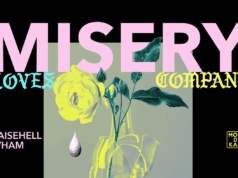
May 1 to 5, 2024
Artist Reception
5 May, 5 PM
Kalooban Arts Initiative
Nectar & Frosting, No. 51 Gen. Yengco St., Imus City, Cavite 4103 Philippines
A Group Exhibit by
Krishna Ariola
Mikki Luistro
Norhanidah Macatoon
Steve Manzano
Santie Navarro
AJ Saño x Art Atak
Verlin Santos
Gerome Soriano
Greenhouse of Peace
(Fertilizing the Grounds for Future Growth)
Written by Allen Felix Bolo
The Garden of Power is a place made for give and take, or reciprocity in art-making, storytelling and narrative making. Here, the destruction, hurt, confusion and displacement that war and colonization have left in their wake are given a name. By naming trauma, power is reclaimed, and the events that took place are reframed in hindsight.
Real life is not intently written like an engaging piece of fiction, with themes and ideas clearly spelled out through characters, world building and plot points. The meaning it holds is personal to each individual. By telling stories, one makes sense of what happened to them. Community-based artists take part in the healing and recovery of their chosen communities through immersion and quality time together. They remain mindful of extractive practices that alienate, distance or exoticize the people they have worked with.
Artistic Symbiosis
The output is not the end goal – rather, the relationships formed along the way. Garden of Power is intended as a cultivation of these newfound bonds. Like with slow curation, process is more important than outcome. Immersing in communities whose realities are vastly different from our own is in itself already a fulfilling process: taking time to know others, to witness their day to day lives, and to learn the minutiae only locals would know beyond what quick and concise news reports would detail.
The works featured here are closer to journalism and truth because of the intimate connection with the subjects involved. Mostly owing to the diverse humanity in the people the artists meet, and their unique, personal lived experiences, they are not only sources of inspiration. They are more than just subjects in a photograph, an objective, if not detached look into the world. Or an anecdotal footnote that’s mentioned in the lengthy exhibition notes of an installation.
In extractive practices, in other words, processes that take more than they give, the stories and human beings contributing to the piece are an afterthought. It is one-sided, and the communities do not reap any benefits from the visibility they experience with the artists.
Their importance in the art making process is not emphasized enough – the artwork and the many outputs and projects that are a result of this relationship would not exist if it weren’t for them. It is no longer all about the stereotypical artist who is isolated from the outside world, locking their self in their room trying to finish the next masterpiece.
Artists owe it to real life that they exist and create art that shows not just their own vulnerabilities, but their own windows and lenses on reality. After all, it is now about the communities they have spent quality time with after reaching out and beyond from their limited realities.






























